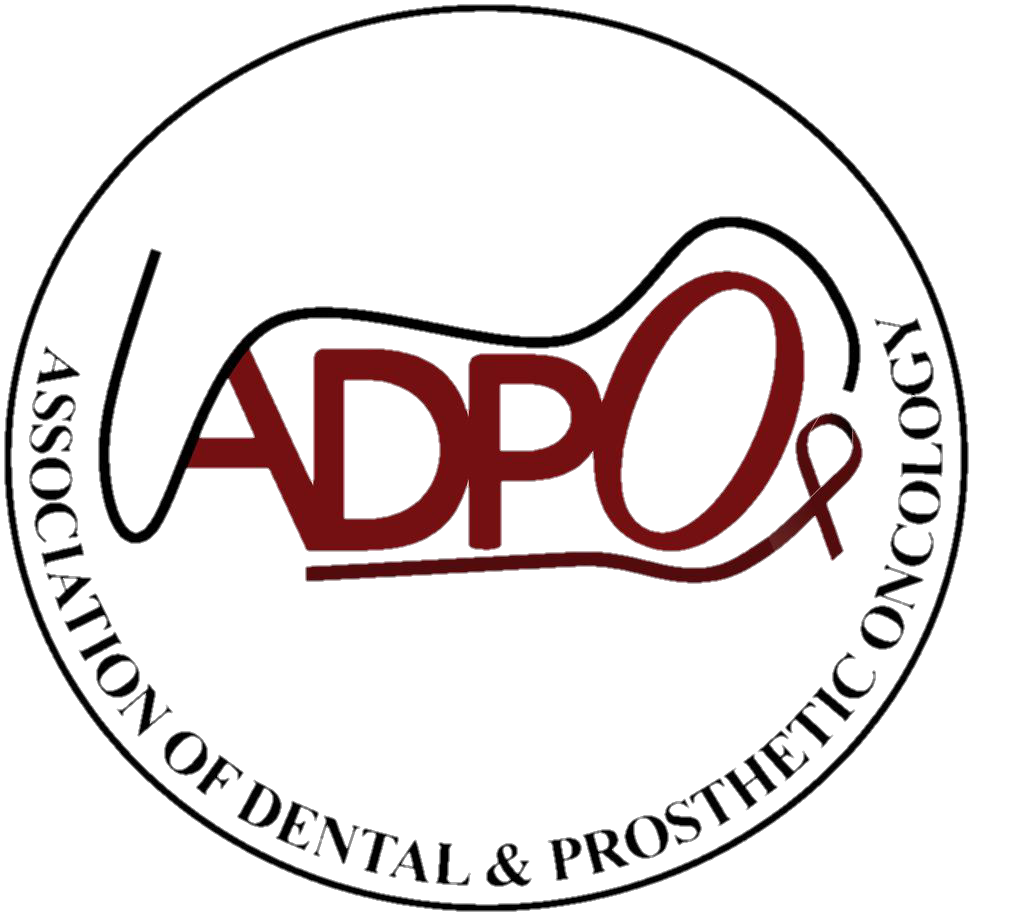
Accepting challenge of Rehabilitation & Oncology

Association of
Dental and Prosthetic Oncology
Accepting challenges of Rehabilitation and Oncology
9004712432
adponcology@gmail.com
9004712432
adponcology@gmail.com
About Us
OUR PURPOSE
OUR MISSION
To encourage promotion, awareness and advancement of ‘Dental Oncology and Maxillofacial Prosthodontics’ amongst dentists, oncologists and allied faculties for the benefit of cancer patients.
To collaborate with other reputed national and international scientific professional bodies for exchange of information and to keep abreast of emerging knowledge on management of cancers.
OUR OBJECTIVES
Development: To develop treatment guidelines and protocols in the field.
Research: To seed systematic research in diagnosis, treatment and rehabilitation in the field of dental treatment of cancer patients.
Education: To conduct seminars, workshops and conferences for education, training and awareness amongst young dentists across India in this field.
Outreach: The Association strives to go beyond formal training to promote subject in unreached areas of India.

ACTIVITIES
- Our annual conference and workshop provide a platform for members to share their research experience in the field.
-
Patient awareness campaigns.
-
Newsletters projecting research and eminent work in the field of dental and prosthetic oncology.
-
Detailed and scientifically robust monthly webinars on topics which are relevant to the field
FAQ's
Dental Oncology is the discipline within dentistry that combines General Dentistry, Maxillofacial Prosthetics, Oral Medicine, and Oral Pathology. The Dental Oncologist must play an integral role in all facets of treatment to provide state-of-the-art care for patients who have head and neck cancer.
Osseointegrated Dental Implants have been available since mid 1970s to help restore intra oral as well as extraoral soft and hard tissue defects. Patients who undergo surgery to remove the tumors of the head and neck can be treated with implant retained facial prosthetic restorations which are not only more esthetically pleasing, but enjoy a longer lifespan than their adhesive retained counterparts. Recent advances in microvascular reconstruction using free-fibular osteocutaneous flap have helped in restoring bone continuity with grafted bone. Intra-oral implant-retained dental rehabilitation of the reconstructed bone facilitates restoration of oral function.
Osseointegrated Dental Implants have been available since mid 1970s to help restore intra oral as well as extraoral soft and hard tissue defects. Patients who undergo surgery to remove the tumors of the head and neck can be treated with implant retained facial prosthetic restorations which are not only more esthetically pleasing, but enjoy a longer lifespan than their adhesive retained counterparts. Recent advances in microvascular reconstruction using free-fibular osteocutaneous flap have helped in restoring bone continuity with grafted bone. Intra-oral implant-retained dental rehabilitation of the reconstructed bone facilitates restoration of oral function.
3-10% of patients treated with radiation for head and neck cancers will develop Osteoradionecrosis (ORN) of the jaw. ORN of jaw bones may be defined as an irradiated bone that becomes devitalized and exposed through the overlying skin or mucosa with no signs of healing for 3 months, without any evidence of tumor recurrence. Pre-radiotherapy dental assessment and treatment should be done to prevent development of ORN. Once developed, it has to be treated with proper symptomatic protocol to prevent its further progression.
3Medication-related osteonecrosis of jaw (MRONJ) may be defined as an area of exposed bone in the maxillofacial region that has persisted for more than eight weeks, in a patient with current or previous treatment with antiresorptives or antiangiogenic agents, with no history of radiotherapy or metastatic disease to jaw bones. Such medications are frequently used to treat diseases that cause bone resorption such as osteoporosis, or to treat skeletal events in cancer patients. Hence to reduce the risk of MRONJ, dental screening and adequate treatment are fundamental before initiating administration of these drugs.
Yes. Initially osteonecrosis of jaws was attributed to the use of bisphosphonate drugs such as zolendronate, ibandronate, alendronate etc. only. However recent research has implicated newer drugs such as denosumab, sunitinib, everolimus etc. in the development of MRONJ. Hence the consensus has shifted to widen the scope of definition and include all events as MRONJ

Accepting challenge of
Rehabilitation & Oncology